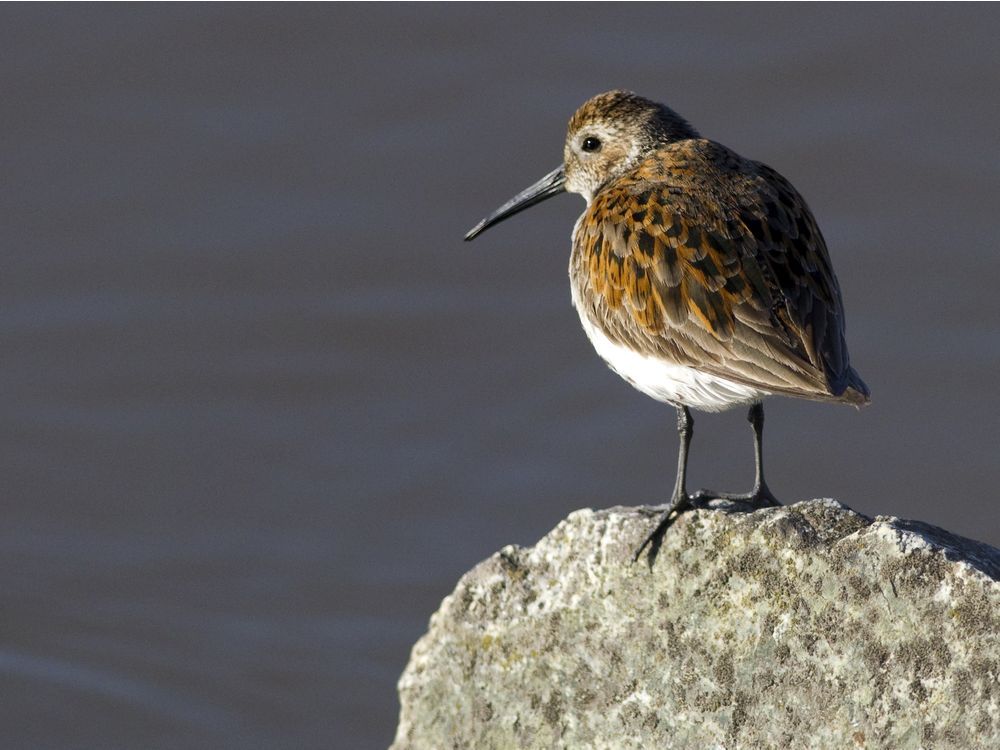SFU prof links sandpiper wingspan change to return of peregrine falcon

Credit to Author: Tiffany Crawford| Date: Fri, 06 Dec 2019 20:35:20 +0000
A comprehensive study published this week in the U.S. found climate change could be the reason why the bodies of some migratory birds are shrinking, while their wingspans increase.
The study is notable to Canadian researchers, as the majority of the birds collected, after they died from colliding with buildings in Chicago, were migrating to or from Canada.
“This is breaking news in the bird world,” said Dr. David Bird, who is an emeritus professor of wildlife biology at McGill University. He said while there still is not enough evidence to say for sure that climate change is the reason for the changes, it is a sound theory that will no doubt spark further study.
Bird said the study uses Bergmann’s rule, in which species tend to be smaller in warmer regions and larger in colder regions. The idea is that the birds are becoming smaller to adapt to rising temperatures.
Ben Freeman, a postdoctoral fellow at the Biodiversity Research Centre at UBC, said the study is extensive and thorough and deals with different species of birds, the majority of which were either headed north to Canada in the spring or coming south from Canada in the fall.
While he is not aware of any other similar data in B.C., he said it’s likely a similar phenomenon is happening here, given the migratory path of the birds collected for the study.
In a separate study into bird wingspan changes, local scientist Ronald Ydenberg, a professor of behavioural ecology at Simon Fraser University, has come to a different conclusion.
He has been studying the wingspan of two species of long-distance migratory sandpipers that breed in the Arctic, and what he has discovered is that the wingspan of the western sandpiper has been lengthening, while the wingspan of the other species — the semipalmated sandpiper (or eastern sandpiper) — has been shrinking.
He attributes the changes to the steady increase in the danger posed by falcons, whose numbers have recovered after nearly being wiped out because of DDT. The toxic pesticide was particularly harmful to the falcon and was banned in 1973.
Ydenberg analyzed data collected over more than four decades to show that the wing lengths of the two species have changed steadily since the mid-1970s, but in opposite directions.
The data show that the change is specific to wings, and not the result of generalized body size change. Of the U.S. study, Ydenberg said while it makes sense that increasing temperatures would lead to reductions in body size, the wing is not a thermoregulatory organ so “it’s unclear why climate change would change wings.”
In his study, which focuses on different species of birds than the U.S. study, Ydenberg concludes that wing length changes are explained by how the two species encounter peregrine falcons on their migratory path.
For example, the eastern sandpipers face peregrine along their breeding route, so they may be adapting shorter, rounder wings which help with acceleration and agility for escaping predators, but western sandpipers are in a migratory race with the peregrine, so they need to fly faster, which may explain why they are developing longer wings for energy-efficient long-distance flight.
He noted that there is other research underway to study the effects of climate change on the sandpiper in the Arctic, but that it was not his focus.
“All of our evidence is much more consistent with the raptor theory,” he said.
The U.S. bird study published on Wednesday involved studying 70,716 birds killed from 1978 through 2016 in collisions with the city’s skyscrapers. It found that their average body sizes steadily declined over that time, although their wingspans increased. The birds were collected by Dave Willard, of the city’s Field Museum, and a team of volunteers.
Using Bergmann’s rule, the results of their study suggest that a warming climate is driving down the size of certain bird species in North America.
The study focused on 52 species — mostly songbirds, dominated by various sparrows, warblers and thrushes — that breed in cold regions of North America and spend their winters in locations south of Chicago.
Over the four decades, body size decreased in all 52 species. The average body mass fell by 2.6 per cent. Leg bone length dropped by 2.4 per cent. The wingspans increased by 1.3 per cent, possibly to enable the species to continue to make long migrations even with smaller bodies.
The research was published in the journal Ecology Letters.
— with file from Reuters